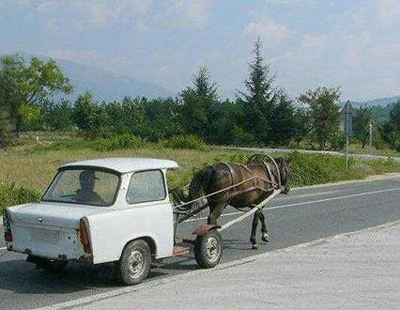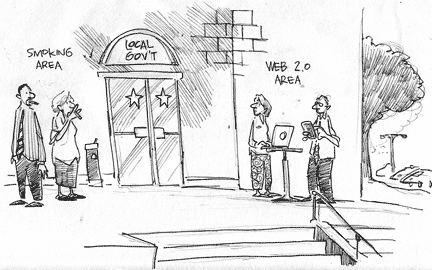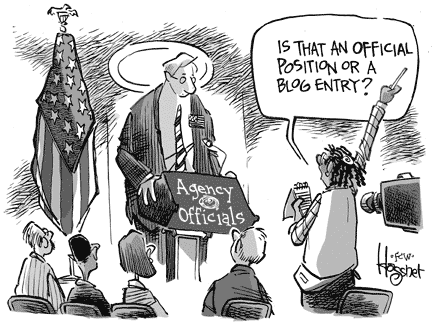Klossner: If a CIO blogs in the forest, is it policy?
When I was a kid, I had a great-grandmother who used to regale us with stories from her childhood in the late 1800s. Her tales of life before cars and telephones, not to mention television, fascinated me and my brothers, but it might as well have been life in the Paleolithic era for all we could comprehend. This will be the feeling my grandchildren will probably have when I gather them on my 50-year-old futon to tell them tales of the untamed world I grew up in, a world without YouTube, the Internet or 11 flavors of Cheez-Its.

I wish my great-grandmother were around today (for starters, she made killer half-moon cookies). I'd ask her about the transitions our country experienced when the automobile was introduced to our culture. I'd specifically ask her how the new technology affected the generation gap, even though they didn't acknowledge anything like a generation gap back then. Heck, teenagers hadn't been invented yet.
And how did this technology affect the workplace? Were older workers complaining about the impatience of these faster moving younger workers? Did agency management consider prohibiting the use of cars in federal work? Did officials pretend cars didn't exist until one day they noticed the employees' parking lot outside the Capitol building?
This week's editorial feels like an extension of last week's entry. We have another case of new technology -- one that younger workers are very comfortable using -- contributing to fears about a generation gap.
In this case, the fear concerns the technology itself, rather than younger workers' attention spans. (To be honest, the only places that short attention spans concern me are in food preparation, machinery operation and reading of my blog posts.) Governments are trying to figure out whether Web 2.0 technologies -- blogging, social networking, wikis, etc. -- have a role in government communications. The main concern is that while these technologies allow for interaction and, one would hope, more involvement from citizens, how will participating officials draw a line between official policy and personal opinion?
I continue to be surprised at how new technologies consistently cause management to hit the panic button. Are these new communication tools that different from the ones now used, the ones that we've created and grown comfortable with and figured out appropriate and inappropriate uses for? Do we have to create an entirely new set of standards and rules for official communication? Is it a case of going from no speed limit for horses and carriages to implementing a speed limit for cars? Or can existing standards be customized for new technologies?
I look forward to the day when -- and you know it will happen -- someone makes a policy statement blunder and tries to pass it off as a misplaced blog post -- "The directive cutting all agency administration work days to 45 minutes was mistakenly included in our recent press release. It was intended to go in our CIO's blog, under the 'Just Thinking' section. We regret any confusion this may have caused."
The issue here isn't whether Web 2.0 should be used. It will be, and is. The issue is how to best take advantage of these technologies. Unfortunately, it seems that some are trying the blinders approach and pretending it's not there. An early sketch I did dealt with this. (sketch below) This will only lead to lost time -- time spent avoiding Web 2.0 instead of finding the personal applications that work best -- and inevitable embarrassments, when the effort to deny the use of these technologies clashes with the many employees who are using them without official approval.

The final cartoon was a little more obvious than I would have liked it to be, but this is such a multi-layered issue that I thought I'd have to make a direct joke for it. With subject matter like this -- change, generation gap issues -- there will be plenty of future opportunities to make more subtle statements.

NEXT STORY: Senate panel blocks DISA director nominee





